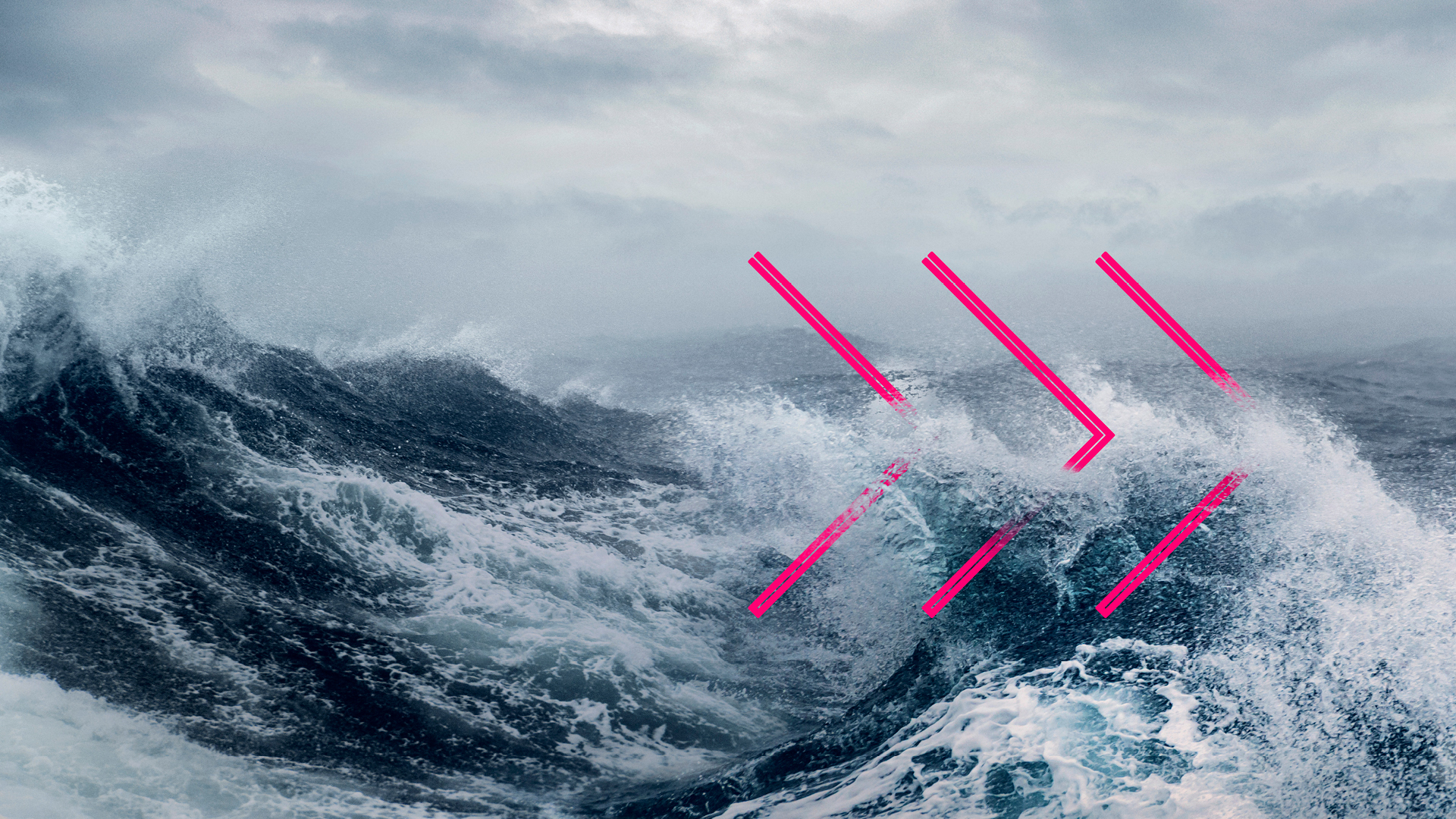FAQ Bunkering
- FAQ Bunkering
- FAQ Fuel, Gas, and Oil
-
What ports do Dan-bunkering offer bunkering services in?
In all ports worldwide where it is allowed to perform bunkering.
Ports -
What is bunkering?
Bunkering is the process of supplying fuel and/or gasoil to be used to power the propulsion system of a ship.
-
How is bunkering calculated?
Bunkers is typically supplied in metric tonnes and in order to calculated the volume in M3, the vessel will measure/sound the tank which the bunkers has been supplied in, and use the density of the product to calculate the mass (MTS) - Volume(M3) = mass(MTS) / the density of the product supplied.
Fuel calculator -
Why is bunkering important?
It is important to bunker, as bunkers is the energy source that powers the engine and moves a ship from A to B. It is important to choose the right counterpart when buying bunkers. The expense for bunkers is a very big part of a vessels daily OPEX, so it is important that it is purchased at the right time, supply is done as agreed, so the vessel is not delayed and the quality is right so the vessel does not face problems burning the oil or worst case breaks down.
-
How is a bunkering operation performed?
A bunkering operation is either a onshore or a offshore operation where bunkers is pumped into the receiving vessel via a bunker hose. A onshore bunkering can by done by a bunker barge, a tank truck or from a pipeline instation, where a offshore bunkering will be done by a bunkerbarge, a socalled STS operation (Ship-To-Ship)
-
How do you prepare for a bunkering operation?
Before the bunkering start, it is important that both the supplying and receiving vessel has agreed on the bunkering procedure, which is called a pre-bunkering procedure. This procedure will incl. a clear agreement on the quality, grade and quantity of bunkers to be supplied, which connections should be used, the pumping and receiving rate, an emergency shutdown procedure and the sampling procedure.
-
What is ship to ship bunkering?
A ship to ship bunkering, also called a STS operation, is the supply of bunkers from one ship to another ship, and is typically carried out offshore.
-
What is submersible bunkering?
It is a bunkering operation carried out to a submersible ship or other craft designed to operate under water.
-
What is semi-submersible bunkering?
It is a bunkering operation carried out to a semi-submersible ship or other craft designed to operate partly under wather. This could a an offshore rig primarily involved in the exploration and production of oil and gas.
-
What is a bunker traders job?
A bunker trader is responsible for facilitating the sale and delivery of bunkers to his og her customers.
Contact -
How much does bunker fuel cost?
The price for bunkers depends on what kind of product is required, which port it is required in and the current price level of the crude oil at the given moment.
Bunker fuel -
What is bunker cost in shipping?
It is the cost of the bunkers a vessel consumes to move a cargo from A to B. The cost depends on which type bunker the vessel use, how much is used and at what market level it has been purchased.
-
What are the three main types of bunkers?
The most common types of bunkers is Low Sulphur Fuel Oil, High Sulphur Fuel Oil and Low Sulphur MGO.
Alternative fuels -
Who collects samples during the bunkering?
The bunker barge will collect the samples and provide the receiving vessel with both the Marpol Samples and 2 or 3 representative samples from the delivery.
-
How do you secure the quality of the bunker?
We carefully selected the suppliers we use, and we do random quality tests to make sure the product we supply is within the agreed specifications.
-
Do you provide bunker surveys?
Yes, we can provide bunker surveys both on quality and quantity.
-
How do I calculate a bunker?
This is done by the cheif engineer C/E onboard a ship. He will use sounding tables and measure the contents of the bunker tanks onboard the ship and based on where he is going, the price and dialog with the operator of the ship, the C/E will decide how much to bunker.
-
How do you segregate bunkers from different suppliers?
You ensure that the bunkers from different supplier are supplied into separate tanks.
-
Will a representative from Dan-Bunkering be present when signing documentation concerning bunkers?
A representative for from the bunker barge will act as Dan-Bunkering's representative.
-
How do you manage bunkering in America where the metric system is not used?
We use conversion models from the imperial system to the metric system.
-
Is marine shipping cost effective?
Transporting large freight shipments across the globe is more cost effective compared to transporting it by air or land due to ships being able to carry more cargo at the time and by doing this less fuel is consumed compared to the volume of cargo transported.
-
What are the 3 types of fuel?
The most common types of Fuel is Low Sulphur Fuel Oil, High Sulphur Fuel Oil, and Low Sulphur MGO.
Bunker fuel -
What types of Bunker Fuel exists?
Heavy Fuel Oil (HFO), Marine Diesel Oil (MDO), Marine Gasoil (MGO), LNG, LPG, Chemical Biofuel (FAME), Ethanol, Metahanol, Ammonia and Hydrogen.
Bunker fuel -
What is fuel oil blending?
Fuel Oil Blending is the process of mixing to or more residuals fuels and/or distillated fuels in order to archive a requested specifications of a fuel oil product. Simplified, if you mix a 380 Cst with a MGO product in the correct mixing ratio you can create a 180 Cst.
-
How can I calculate my fuel requirements?
Please feel free to use our fuel calculator and other tools.
Fuel calculator -
What is fuel density? And how do you calculate it?
Density is the relation between mass (weight: kilogram, metric tone etc.) and volume (liters, gallons & cubic meters) of a product.
-
What is Sulphur?
Sulphur is a naturally occurring element in crude oil; it becomes concentrated in the residual heavy fuel during the refining process. The concentration of Sulphur in fuel oil depends primarily on the origin of the crude oil. On a worldwide scale the average Sulphur level is in the range of 2-4% m/m (by mass).
-
Which fuel is ideal fuel?
The ideal fuel is the fuel most suitable for the ship. There are fuel types which pollute less, some require less processing and some are less expensive than others.
-
Where is fuel found?
Bunkers which incl. fuel is the “left over product” from the refinery process of crude oil, also called residual. Crude Oil is a naturally occurring fossil fuel which means it comes from the remains of dead organism. Crude oil exist in liquid form under ground and can after extraction be refined to e.g.,. LPG, Gasoline and Fuel.
-
How long should bunker fuel samples be kept onboard and available for inspection?
MARPOL Annex VI requires that a representative sample of the fuel supplied is retained on board for a minimum of twelve months.
-
Is bunker fuel the same as diesel?
No, fuel oils is know as a Risidual Oil where a Marine gasoil (MGO) and Marine diesel oil (MDO) are fuels that consist exclusively of distillates.
-
Is MGO a diesel?
MGO consist exclusively of distillates and is a similar product to Diesel Fuel which are typically used by vehicles used for road transportation, rail transport and stationary engines.
-
Is bunker fuel the same as diesel?
It is a bunkering operation carried out to a semi-submersible ship or other craft designed to operate partly under wather. This could a an offshore rig primarily involved in the exploration and production of oil and gas.
-
Why do ships use diesel engines?
There are more reasons why some ships only have MGO/Diesel engines. One can be the size of the ship, a large Fuel engine would simply not fit, others choose MGO/Diesel due to the product does not needed any treatment before it is used to power the engine, the quality is better so it is safer to use in regards to engine breakdowns, and it typically pollute less.
-
What is fuel oil blending?
Fuel Oil Blending is the process of mixing to or more residuals fuels and/or distillated fuels in order to archive a requested specifications of a fuel oil product. Simplified, if you mix a 380 Cst with a MGO product in the correct mixing ratio you can create a 180 Cst.
-
How do ships refuel at sea?
When ships refuel at sea it is called a offshore delivery or a STS operation (Ship-To -Ship) A bunker barge will go alongside the receiving vessel at an approved bunker location, and bunkers will be supplied via a bunker hose connected to both ships.
-
What is HFO?
HFO stands for Heavy Fuel Oil.
-
What is Heavy Fuel Oil (HFO)?
Heavy fuel oil is a product which inccure when distillating Crude Oil. Heavy fuel oil is mainly used as marine fuel in ships with medium and low-speed marine diesel engines which are designed for heavy fuel oil.
-
What is LPG (Liquefied Petroleum Gas)
LPG stands for Liquefied Petroleum Gas and is a hydrocarbon gas that exists in a liquefied form. It is a low carbon and highly efficient fuel that is supplied in two main forms, Propane amd Butane. It boils at a low temperature and is typically stored in pressurised steel gas bottles or bulk LPG tanks.
-
What is CCAI?
The calculated carbon aromaticity index (CCAI) is an index of the ignition quality of residual fuel oil. Try our CCAI-calculator here.
CCAI calculator



